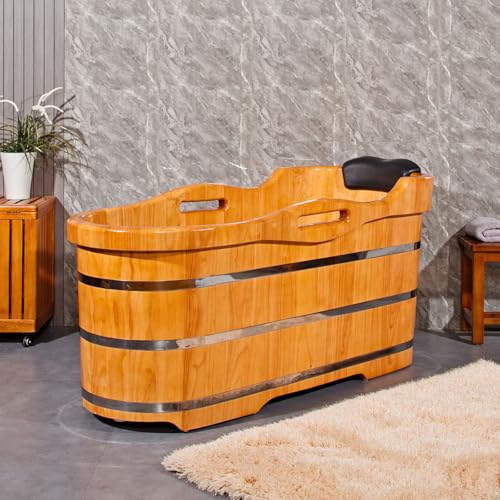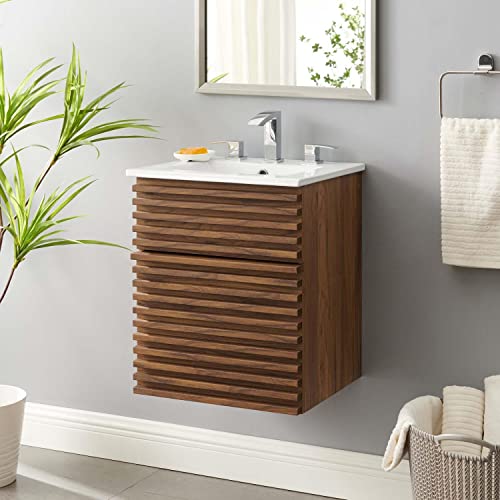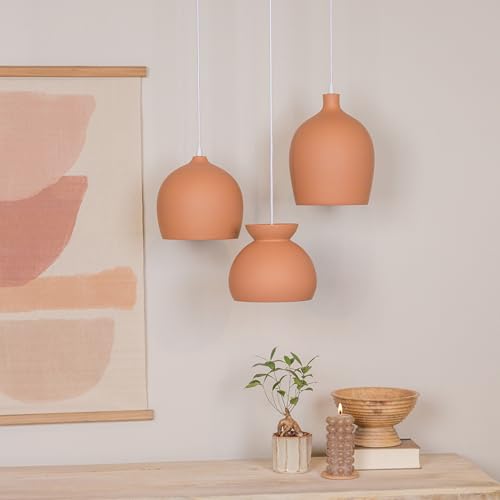Japandi design, a blend of Japanese minimalism and Scandinavian functionality, is gaining attention for its calming and elegant aesthetic.
This approach to decorating offers simplicity, practicality, and a touch of nature that can turn any bathroom into a relaxing retreat.
Let’s now look at some Japanese bathroom design ideas you can try.
1. Wooden Bathtub with Matte Finish
A wooden bathtub with a matte finish can bring a warm, natural feel to your Japandi bathroom.
The neutral tones of the wood blend seamlessly with the light and neutral color palette typical in Japandi design.
A wooden bathtub also adds texture and a touch of nature, making your bathroom feel like a serene, spa-like retreat.
2. Handmade Stone Sink
Stone sinks are durable and give a timeless look. They pair well with other natural materials like wood and bamboo, creating a warm and inviting atmosphere.
Choose a sink with simple lines and a smooth finish to keep the minimalist aesthetic.
This will help maintain the serene and clutter-free environment that defines Japandi style.
3. Minimalist Floating Vanity
A minimalist floating vanity can give your Japandi bathroom a clean and modern look.
By keeping the vanity off the ground, you create an airy and spacious feeling in the room.
Choose a vanity with clean lines and simple design. Wood tones or neutral colors work best to blend with the rest of the Japandi aesthetic.
4. Bamboo Towel Ladder
A bamboo towel ladder is a great way to add a natural touch to your Japandi bathroom.
Place the ladder against a wall or near the shower. Use it to hang towels or even small baskets for storage.
Bamboo is durable and eco-friendly, making it a perfect choice for a serene, green bathroom.
5. Matte Black Fixtures
Matte black fixtures add a sleek, modern touch to your Japandi bathroom. They provide a strong contrast against light-colored tiles or wood.
You can use matte black faucets, showerheads, and towel bars to create a unified look.
Pairing them with natural elements like wood and stone enhances the minimalist feel.
6. Clay Pendant Lights
Clay pendant lights can add a charming touch to your Japandi bathroom.
They bring a warm and earthy feel, perfectly aligning with the natural vibe of Japandi design.
Look for handmade clay lanterns with simple, clean lines to keep the minimalist style.
7. Natural Reed Blinds
Natural reed blinds are a great way to add a touch of organic beauty to your Japandi bathroom.
Made from natural materials, they provide a soft, diffused light that enhances the calming atmosphere.
Consider pairing reed blinds with other natural elements like wooden shelves or stone countertops to complete the look.
8. Neutral Toned Tiles
Using neutral toned tiles in your Japandi bathroom can create a calm and balanced vibe.
Light colors like beige, soft gray, and white work great for this style. These tones keep the space feeling open and bright.
Neutral tiles with a handmade or textured finish add a touch of warmth and interest. It’s a simple way to make your bathroom feel more inviting.
9. Japanese Hinoki Stool
A Japanese Hinoki stool can bring charm and functionality to your Japandi bathroom.
These stools are made from Hinoki wood, known for its light color and pleasant aroma.
You can use Hinoki stools as a seat or a small table to hold towels and toiletries.
10. Wall-Mounted Wooden Shelves
Wall-mounted wooden shelves are a great way to add both style and function to your Japandi bathroom.
Arrange your shelves to keep the bathroom neat and organized.
You can store towels, decorative items, or plants to bring a touch of nature indoors.
Understanding Japandi Design

Japandi design beautifully merges Japanese and Scandinavian aesthetics to create a space that feels peaceful and simple. It’s based on natural elements, neutral colors, and minimalism.
Origins of Japandi Style
The Japandi style is a blend of Japanese and Scandinavian design principles. This fusion began when designers sought to combine the clean, functional design of Scandinavia with the calm, nature-inspired elements of Japan.
Japanese design emphasizes simplicity, natural materials, and harmony. Scandinavian design values functionality, comfort, and clean lines.
This combination leads to spaces that are both practical and serene. By merging these two styles, Japandi design enhances the best of both worlds: creating homes filled with light, warmth, and tranquility.
Core Principles of Japandi
The core principles of Japandi include minimalism, natural materials, and a neutral color palette.
Minimalism keeps the space uncluttered and relaxing. You should remove unnecessary items and focus on essentials.
Natural materials like wood, bamboo, and stone are at the heart of Japandi design. These elements bring the beauty of the outdoors inside and create a calming environment.
Neutral colors such as white, beige, and gray dominate Japandi spaces. These shades make the room appear larger and more open. Warm accents like soft textiles can add a touch of coziness, enhancing the overall tranquility.
Essential Elements of Japandi Bathrooms
Creating a Japandi bathroom involves embracing natural materials, maintaining a minimalist aesthetic, and using a neutral color palette. These elements help you achieve a calming and serene space.
Natural Materials
Natural materials play a crucial role in Japandi bathrooms.
Wood, stone, and bamboo add warmth and a touch of nature. Using wooden elements, like teak or oak, can bring a sense of coziness. Stone sinks and countertops offer durability and a refined look.
Incorporating plants is another way to bring the outdoors in. A potted plant or hanging greenery can add life to the space. Bamboo is particularly popular for its sustainability and sleek appearance.
You can also use natural fibers, like cotton or linen, for towels and bath mats. These materials not only look good but also feel good, enhancing your bathroom’s comfort.
Minimalist Aesthetic
A minimalist aesthetic is central to Japandi design. This means less clutter and more open space.
Choose furniture and accessories with clean lines and simple shapes. Avoid ornate decorations; instead, go for functional and beautiful items.
Storage solutions should be smart and subtle. Floating shelves or built-in cabinets can keep your bathroom tidy without taking up much space.
Focus on quality over quantity, selecting a few well-made pieces that will last.
Keeping surfaces clear and organized also contributes to the overall minimalist feel. Hidden storage can help keep things out of sight but within reach.
Aim for a simple layout that promotes calmness and order.
Neutral Color Palette
The neutral color palette in Japandi bathrooms creates a soothing atmosphere. Think shades of white, beige, gray, and soft pastels.
These colors make the space feel open and airy, while also staying timeless and elegant.
Accent colors can be added sparingly. You might choose a dark blue or green for a bit of contrast, but it should be used thoughtfully.
The focus should remain on harmony and balance.
Using natural light to its fullest can enhance the neutral colors. Large windows or skylights can fill the bathroom with daylight, emphasizing the soft tones and natural materials.
This helps create a relaxing environment that’s perfect for unwinding.
Design Tips for a Japandi Bathroom

Combining Japanese and Scandinavian styles, a Japandi bathroom emphasizes natural elements, simplicity, and functionality. Key aspects include using wood and stone, optimizing light, and selecting appropriate accessories.
Incorporating Wood and Stone
Using natural materials like wood and stone is fundamental. These elements bring warmth and texture to the space, making it feel cozy and inviting.
Consider wooden vanities, shelves, and stone countertops.
You might also like using a bamboo bath mat, which not only fits the aesthetic but also adds a touch of spa-like comfort.
When choosing wood, go for lighter shades to maintain a serene and spacious atmosphere. Stone elements can be both functional and decorative, perfect for providing a timeless and harmonious vibe.
Optimizing Light and Space
Natural light is crucial in Japandi design. Large, unobstructed windows can flood the bathroom with daylight, enhancing the sense of openness.
You can use light, sheer curtains to maintain privacy without blocking light.
Mirrors also play a key role; strategically placing them can reflect light and make the space feel larger.
Consider installing floating vanities to free up floor space and create an uncluttered look. This will help the bathroom appear more open and airy.
Choosing the Right Accessories
Select accessories that are both functional and aesthetic.
Think of items like woven baskets for storage, soft textiles like cotton towels, and minimalistic soap dispensers.
These should all align with the neutral color palette typical of Japandi design.
A good choice is plants like ferns or small succulents.
They bring a touch of nature indoors and enhance the calming ambiance.
The right accessories will subtly enhance the style without overwhelming the space, resulting in a balanced and serene bathroom.
Other articles you may also like:










